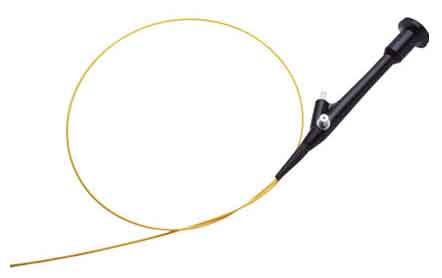Forceps are well-known as a surgical instrument which is used to pick up/hold delicate structures or structures and objects that cannot be held by hands. The word Forceps has been derived from the combination of Latin words (formus: hot, ferrum: iron, capere: to hold), which either means an instrument which is made up of iron and is used to hold objects or an instrument which is meant to hold anything hot. The forceps are originally inspired by the tongs of the Blacksmith.
All the forceps are made up of two arms or blades either joined at one terminal end, the joined end in this case work as a fulcrum or the arms may be crossed over with finger bows at one end.
Stephen Hales (1677-1761) was among the pioneers who used the tweezers like forceps to extract urethral stones. In 1723, Garengeot, a French surgeon described the use of forceps and the way it should be held i.e. like a pen. The forceps had been used from time to time for picking or holding structures during surgical procedures in the past but the first ever forceps which were introduced in operation theaters were dissecting forceps in 1830s. Initially the jaws of the forceps were smooth; Romans were the one who introduced teeth which ensured better gripping.
Types of Forceps
Thumb forceps/Dissecting forceps
Artery Forceps/Hemostat
Tissue Holding Forceps
Towel Clips
Needle Holders
Gland Holding Forceps
Dissecting Forceps

First ones to appear, they are also known as thumb forceps because the blades are closed by the thumb of the surgeon. They are held like a pen as mentioned earlier and are used to hold tissues while dissecting or suturing the wound. Additionally they are used to hold dressings or drapes to ensure sterility. The forceps may have serrated edges, tooth or multiple teeth. The toothed forceps gives a firm grip but may cause trauma.
Artery Forceps/Hemostat
The concept of hemostat was evolved during 19th century and that was the time when forceps were modified from tongs to scissors. Generally the artery forceps have two blades or arms, a joint, catch and finger-bows. Prior to 19th century the hemostasis i.e. arresting bleeders during surgery was achieved by cautery or by using ordinary forceps locked with an external ring to keep the jaws locked. The 19th century hemostats were inspired from forceps designed by Pean, Spencer Wells and Oschner in late 18s.
The Hemostats are helpful in catching the bleeders, crushing them which leads to coagulation or ligating them i.e. suturing the bleeder.
The blades may be straight or curved. The jaws may have transverse or longitudinal serrations.

Tissue Holding Forceps
The forceps are meant to hold tissues during surgical procedure. Their blades may be curved or straight. They may be traumatic or non traumatic depending upon the type and the structure the forceps is required to hold.
Towel Clips
The forceps has curved inward jaws and is used in draping for the operations.
Needle Holders
 They are meant to hold suturing needles and they have a longitudinal groove in the center of the jaw to hold the needle. Additionally jaws have criss-cross serrations. For the mechanical advantage the ratio of the handles to the blades is 4:1.
They are meant to hold suturing needles and they have a longitudinal groove in the center of the jaw to hold the needle. Additionally jaws have criss-cross serrations. For the mechanical advantage the ratio of the handles to the blades is 4:1.
Gland Holding Forceps
As the name suggests these forceps are meant to hold glands and their jaws are in ring form.
Forceps are constantly evolving and are one of the most popular and useful instrument in operation theaters.


